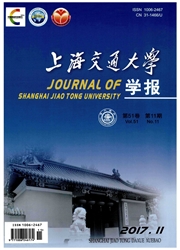

 中文摘要:
中文摘要:
This paper presents a new method for estimating the isometric contraction force and the characterization of muscle’s intrinsic property.The method,called the energy kernel method,starts with converting the electromyography(EMG)signal into planar phase portraits,on which the elliptic distribution of the state points is named as the energy kernel,while that formed by the noise signal is called the noise kernel.Based on such stochastic features of the phase portraits,we approximate the EMG signal within a rectangular window as a harmonic oscillator(EMG oscillator).The study establishes the relationship between the energy of control signal(EMG)and that of output signal(force/power),and a characteristic energy is proposed to estimate the muscle force.On the other hand,the natural frequencies of the noise and the EMG signal can be attained with the energy kernel and noise kernel.In this way,the direct signal–noise recognition and separation can be accomplished.The results show that the representativeness of the characteristic energy toward the force is satisfactory,and the method is very robust since it combines the advantages of both RMS and MPF.Moreover,the natural frequency of the EMG oscillator is not governed by the MU firing rate of a specific muscle,indicating that this frequency correlates with the intrinsic property of muscle.The physical meanings of the model provide new insights into the understanding of EMG.
 英文摘要:
英文摘要:
This paper presents a new method for esti- mating the isometric contraction force and the characterization of muscle's intrinsic property. The method, called the energy kernel method, starts with converting the elec- tromyography (EMG) signal into planar phase portraits, on which the elliptic distribution of the state points is named as the energy kernel, while that formed by the noise signal is called the noise kernel. Based on such stochastic features of the phase portraits, we approximate the EMG signal within a rectangular window as a harmonic oscillator (EMG oscillator). The study establishes the relationship between the energy of control signal (EMG) and that of output signal (force/power), and a characteristic energy is proposed to estimate the muscle force. On the other hand, the natural frequencies of the noise and the EMG signal can be attained with the energy kernel and noise kernel. In this way, the direct signal-noise recognition and separation can be accomplished. The results show that the representa- tiveness of the characteristic energy toward the force is satisfactory, and the method is very robust since it com- bines the advantages of both RMS and MPF. Moreover, the natural frequency of the EMG oscillator is not governed by the MU firing rate of a specific muscle, indicating that this frequency correlates with the intrinsic property of muscle. The physical meanings of the model provide new insights into the understanding of EMG.
 同期刊论文项目
同期刊论文项目
 同项目期刊论文
同项目期刊论文
 Imaginal Thinking-Based Human-Machine Design Methodology for the Configuration of Reconfigurable Mac
Imaginal Thinking-Based Human-Machine Design Methodology for the Configuration of Reconfigurable Mac Bioelectrochemical control mechanism with variable-frequency regulation for skeletal muscle contract
Bioelectrochemical control mechanism with variable-frequency regulation for skeletal muscle contract A dynamic model of skeletal muscle based on collective behavior of myosin motors-Biomechanics of ske
A dynamic model of skeletal muscle based on collective behavior of myosin motors-Biomechanics of ske SMA-based bionic integration design of self-sensor-actuator-structure for artificial skeletal muscle
SMA-based bionic integration design of self-sensor-actuator-structure for artificial skeletal muscle 期刊信息
期刊信息
